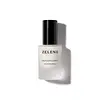What's inside
What's inside
 Key Ingredients
Key Ingredients

 Benefits
Benefits

 Concerns
Concerns

 Ingredients Side-by-side
Ingredients Side-by-side

Water
Skin ConditioningPentaerythrityl Tetraethylhexanoate
EmollientPhytosteryl Canola Glycerides
Skin ConditioningCaprylic/Capric Triglyceride
MaskingGlycerin
HumectantDimethicone
EmollientLauryl Lactate
EmollientCetearyl Alcohol
EmollientSqualane
EmollientHydrolyzed Glycosaminoglycans
HumectantMagnesium Ascorbyl Phosphate
AntioxidantPhospholipids
Skin ConditioningSodium Stearoyl Glutamate
CleansingCetearyl Glucoside
EmulsifyingBenzyl Alcohol
PerfumingOrnithine
Skin ConditioningTrifluoroacetyl Tripeptide-2
Skin ConditioningTeprenone
Skin ConditioningAcetyl Tetrapeptide-9
Skin ConditioningYeast Extract
Skin ConditioningGlycolipids
Skin ConditioningHydrolyzed Soy Protein
HumectantHydrolyzed Yeast Protein
Skin ConditioningMethylsilanol Mannuronate
Skin ConditioningHyaluronic Acid
HumectantPlankton Extract
Skin ConditioningSpirulina Maxima Extract
SmoothingFucus Serratus Extract
Skin ProtectingSea Whip Extract
Skin ConditioningLaminaria Digitata Extract
Skin ProtectingPalmaria Palmata Extract
Skin ProtectingSaccharomyces Ferment Lysate Filtrate
Skin ConditioningHimanthalia Elongata Extract
Skin ProtectingUlva Lactuca Extract
Skin ConditioningSilanetriol
Glycogen
HumectantTocopherol
AntioxidantMethylpropanediol
SolventButylene Glycol
HumectantXanthan Gum
EmulsifyingPropanediol
SolventAmmonium Acryloyldimethyltaurate/Vp Copolymer
Dehydroacetic Acid
PreservativeDextran
Sodium Dehydroacetate
PreservativeMannitol
HumectantCarbomer
Emulsion StabilisingSodium Hydroxide
BufferingCitric Acid
BufferingSorbic Acid
PreservativeSodium Benzoate
MaskingLevulinic Acid
PerfumingP-Anisic Acid
MaskingPotassium Sorbate
PreservativeWater, Pentaerythrityl Tetraethylhexanoate, Phytosteryl Canola Glycerides, Caprylic/Capric Triglyceride, Glycerin, Dimethicone, Lauryl Lactate, Cetearyl Alcohol, Squalane, Hydrolyzed Glycosaminoglycans, Magnesium Ascorbyl Phosphate, Phospholipids, Sodium Stearoyl Glutamate, Cetearyl Glucoside, Benzyl Alcohol, Ornithine, Trifluoroacetyl Tripeptide-2, Teprenone, Acetyl Tetrapeptide-9, Yeast Extract, Glycolipids, Hydrolyzed Soy Protein, Hydrolyzed Yeast Protein, Methylsilanol Mannuronate, Hyaluronic Acid, Plankton Extract, Spirulina Maxima Extract, Fucus Serratus Extract, Sea Whip Extract, Laminaria Digitata Extract, Palmaria Palmata Extract, Saccharomyces Ferment Lysate Filtrate, Himanthalia Elongata Extract, Ulva Lactuca Extract, Silanetriol, Glycogen, Tocopherol, Methylpropanediol, Butylene Glycol, Xanthan Gum, Propanediol, Ammonium Acryloyldimethyltaurate/Vp Copolymer, Dehydroacetic Acid, Dextran, Sodium Dehydroacetate, Mannitol, Carbomer, Sodium Hydroxide, Citric Acid, Sorbic Acid, Sodium Benzoate, Levulinic Acid, P-Anisic Acid, Potassium Sorbate
Ingredients Explained
These ingredients are found in both products.
Ingredients higher up in an ingredient list are typically present in a larger amount.
Butylene Glycol (or BG) is used within cosmetic products for a few different reasons:
Overall, Butylene Glycol is a safe and well-rounded ingredient that works well with other ingredients.
Though this ingredient works well with most skin types, some people with sensitive skin may experience a reaction such as allergic rashes, closed comedones, or itchiness.
Learn more about Butylene GlycolGlycerin is already naturally found in your skin. It helps moisturize and protect your skin.
A study from 2016 found glycerin to be more effective as a humectant than AHAs and hyaluronic acid.
As a humectant, it helps the skin stay hydrated by pulling moisture to your skin. The low molecular weight of glycerin allows it to pull moisture into the deeper layers of your skin.
Hydrated skin improves your skin barrier; Your skin barrier helps protect against irritants and bacteria.
Glycerin has also been found to have antimicrobial and antiviral properties. Due to these properties, glycerin is often used in wound and burn treatments.
In cosmetics, glycerin is usually derived from plants such as soybean or palm. However, it can also be sourced from animals, such as tallow or animal fat.
This ingredient is organic, colorless, odorless, and non-toxic.
Glycerin is the name for this ingredient in American English. British English uses Glycerol/Glycerine.
Learn more about GlycerinWater. It's the most common cosmetic ingredient of all. You'll usually see it at the top of ingredient lists, meaning that it makes up the largest part of the product.
So why is it so popular? Water most often acts as a solvent - this means that it helps dissolve other ingredients into the formulation.
You'll also recognize water as that liquid we all need to stay alive. If you see this, drink a glass of water. Stay hydrated!
Learn more about Water